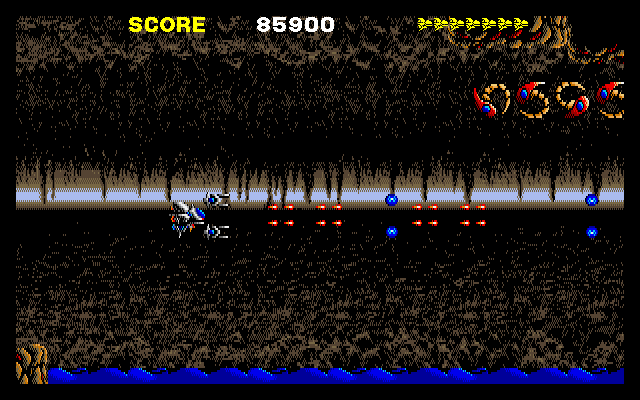(Note:To use the fonts, unzip the files to the emulator’s directory. Run Anex86, select Config and then Fonts from one of the tabs. Locate “anex86.bmp” (without the quotations) and exit the Config menu. Now, your texts shouldn’t be gibberish anymore.) The games are the.hdi files located in the “TH01-05” rar. The.hdi files are floppy disk images of the original games, and they require a PC98 emulator to open.
[PC98]PC98メーカー別詰め合わせ 補完 20090605.rar (View Contents), 01-Nov-2014 20:24, 535.2M. [PC98]PC98メーカー別詰め合わせ「あ」.rar (View Contents).

Anex86 is an emulator included in the PC98 pack, but it has a tendency to create problems with the sound/image quality. Instead of using that, you should use to open the.hdi files. To open a game: 1) Open T98-Next. 2) Click on the “main” tab, then click the “DISK” tab below it. 3) Click on one of the rectangular boxes next to the grayed-out “edit” buttons in the “HD Drive” section.

4) Browse for the desired.hdi game file. 5) Afterwards, click on the big power button in the top-left corner to run the game. 6) If you want to play another game, be sure to remove the old.hdi file (click the “remove” button. You can’t have more than one game in the “HD drive” section at the same time. (As usual you should go to the Regional & Language Options menu in the control panel and install East Asian Language files, as well as computer’s locale to Japanese for the text to display properly.).
PC-9801RX with the Type Release date October 1982; 36 years ago ( 1982-10) (PC-9801) November 1992; 26 years ago ( 1992-11) (PC-9821) Introductory price ¥298,000 Discontinued 2003,,, @ 5 MHz and higher Memory 128 and higher Predecessor The PC-9800 series (: PC-9800シリーズ,: Pī Sī Kyūsen Happyaku Shirīzu), commonly shortened to PC-98, is a lineup of and personal computers manufactured by from 1982 through 2000. The platform established NEC's dominance in the Japanese market, and by 1999, more than 18 million PC-98 units had been sold. PC-9801F motherboard The first model, the PC-9801, was launched in October 1982, and employed an.
Some of these files have MEP connections defined while some do not. Dimohod chertezhi podklyucheniya kotla dwg. These are a mix of different 2010 Revit family files.
It ran at a of 5 MHz, with two display controllers (one for text, the other for video graphics), and shipped with 128 KB of, expandable to 640 KB. Its 8-color display had a maximum resolution of 640×400 pixels. Its successor, the PC-9801E, which appeared in 1983, employed an -2 CPU, which could selectively run at a speed of either 5 or 8 MHz. The NEC PC-9801VM used CPU. When the PC-9801 was launched in 1982, it was initially priced at 298,000 yen (about US$1,200 in 1982 dollars). While NEC did not market these specific machines in the West, it did sell the NEC, which has similar hardware as early PC-98 models.
In the 1980s and early 1990s, NEC dominated the Japan domestic PC market with more than 60% of the PCs sold as PC-9801. In 1990, Japan introduced the which enabled displaying Japanese text on standard adapters. After that, the decline of the PC-98 began. The PC-9801's last successor was the -based PC-9821Ra43 (with a clock frequency of 433 MHz, using a 440FX chipset-based motherboard design from 1998), which appeared in 2000. NEC kept much of its hardware and platform proprietary or under license, so while it had a virtual monopoly in the Japanese market, later IBM PC clones with DOS/V and Windows from companies such as and that did not require such license fees (like Epson's 98 clones) flooded the market and displaced NEC.
[ ] Hardware [ ] The PC-98 is different from the IBM PC in many ways; for instance, it uses its own 16-bit C-Bus () instead of the bus;, addressing, memory management, and graphics output are also different. However, localized or will still run on PC-9801s.
Expansion bus [ ]. 4 MB memory board for C-Bus Many PC-9801 models could increase system memory by expansion boards, daughterboards, or proprietary. They were limited to 14.6 MB, due to 24-bit address pins and reserve space. Memory boards for C-Bus were also available.
The PC-9821Af introduced in 1993 shipped with standard 72-pin SIMMs, broke 14.6 MB barrier and supported memory up to 79.6 MB. Later desktop models shipped with standard SIMM or memory. Storage [ ] Early PC-9801 models supported 1232 KB 8-inch and/or 640 KB 5¼-inch floppy drives. Referencia banka obrazec na. Each used different lines and I/O ports.
Later models supported both interfaces. 5¼-inch and 3½-inch HD floppy disks used the same logical format and data rate with 1232 KB 8-inch floppy disks. They became a non-standard format while formats brought by IBM and became industrial standard. The PC-98 supports up to four floppy drives. If the system is booted from a floppy drive, MS-DOS to all of the floppy drives before considering hard drives; if booted from a hard drive, it will do the opposite. If the OS was installed on the hard drive, MS-DOS would assign the hard drive as drive 'A:' and the floppy as drive 'B:'; this would cause incompatibility among Windows PC applications, although it can be resolved with the SETUP command in Windows 95, turning on the '/AT' switch to assign the Windows system drive to the standard 'C:' drive. The PC-98 used several different interfaces of hard drives.